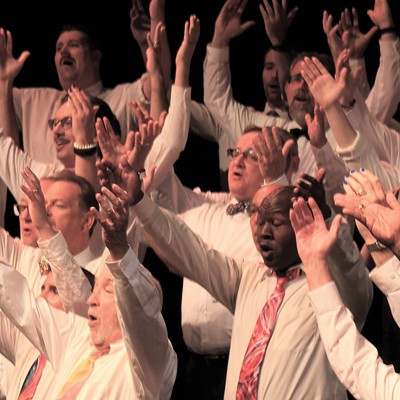"I think I was born in the wrong era," says Perri Rubin (Betsy Kruse Craig) in the opening scene of the Invisible Theatre's In the Mood.
Indeed, the whole play winks at another era and the works of old masters of farce like Noël Coward and Philip Barry. The result plays like a contemporary remix of Private Lives and The Philadelphia Story.
I say "contemporary," even though an exact time period is never specified. We are told that the setting is "a penthouse apartment in Manhattan" on a "late Friday afternoon."
This is only the second production of Kathleen Clark's In the Mood—it premiered this summer at the Berkshire Theatre Festival in Stockbridge, Mass.—and the match between the nostalgic script and the Invisible Theatre seems ideal. Managing Artistic Director Susan Claassen not only directed In the Mood; she co-produced it, designed the sound and designed the set (with James Blair).
Claassen and Blair have arranged the stage to depict a luxury apartment. Impressively, the small set has four separate entrances, suggesting a larger apartment beyond what we can see. The cast sets a fast pace, with energetic blocking that takes full advantage of the space.
As the play opens, our heroine, Perri, is anxiously planning an elaborate surprise party for her husband, Derek (Kevin Black), despite the fact that he hates parties and surprises. Perri is in for an unpleasant surprise herself when an old flame, Nick (Bruce Morganti), arrives. His sister, Sally (Polly Schlitz), was supposed to come but was delayed by the cancellation of her third wedding.
And thus begins a series of comic misunderstandings.
Every character is forced to play a role or engage in some kind of pretense. Several characters need to literally pretend to be someone they're not, and Perri and Derek need to keep up the (increasingly strained) illusion of happily married life. Over the course of the play, pretenses crumble, and the characters need to admit their true desires. These desires are not particularly surprising—everyone wants true love—but it's great fun to watch the characters scramble to get to their happy endings.
In the Mood is set in that "penthouse apartment in Manhattan," but it exists in a New York untouched by the tragedies of real life. As the country marks the 10th anniversary of the Sept. 11 attacks, we should remember that New York's iconic status helped make it a target for terrorism.
Several Tucson theater groups have responded to the Sept. 11 anniversary. Winding Road Theater Ensemble, a comparative newcomer to the Tucson theater scene, marks the anniversary with a premiere production of A Human Equation by Peter Bonilla.
Winding Road is staging A Human Equation at Christ Presbyterian Church, and the setting gives the production a staged-reading feel. The staging is extremely minimal—there's no set, other than a few tables and chairs—and the actors sit in the pews with the rest of the audience when they're not in a scene.
Bonilla's play centers around Kenneth Feinberg, a lawyer who was tasked with determining how much money each family of the Sept. 11 victims would receive from the federal government. As Feinberg, actor Jeff Scotland addresses the audience directly, sharing what led him to lobby for the job. Roger Owen plays Wolf, the husband of a victim who was outspoken in his critique of the fund. The other five actors play a variety of characters, from the victims' family members to politicians.
The ensemble cast members do an excellent job of conveying different characters; the changes in costume are minimal, but the distinctions between the different people are perfectly clear—yet it was a mistake to have the victims' families played by only a few actors.
In theory, the choice makes sense. Feinberg interacted with hundreds of victims' families; one of the themes of the play is the sheer enormity of his task, which is visually suggested by the boxes of paperwork that are brought onstage throughout the play. However, the audience never gets to learn the names of the people whose stories we are told: A character comes to speak to Feinberg, tells a fragment of his or her story, and leaves, never to reappear again. Some of these stories are very moving; for example, actor Steve Wood gives a beautiful speech from the perspective of a husband whose wife died in the towers. But hearing one story fragment after another, without any coherent through-line, does not satisfy dramatically.
The play gains more focus and coherence in Act 2. We see how the time spent with the victims' families has changed Feinberg. He's more sympathetic, more inclined to listen to the families' stories, and more willing to admit that the legal system is flawed. It's satisfying to see our protagonist evolve, and Scotland does a great job of subtly shifting the way in which Feinberg interacts with his clients. Feinberg even makes peace with Wolf, the outspoken critic.
This relationship (and the rapport between actors Scotland and Owen) is one of the strongest elements of the piece. However, it also leaves one wishing that more of the supporting characters could have been developed with such depth.








